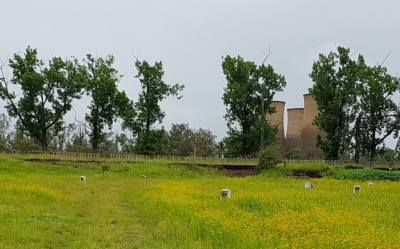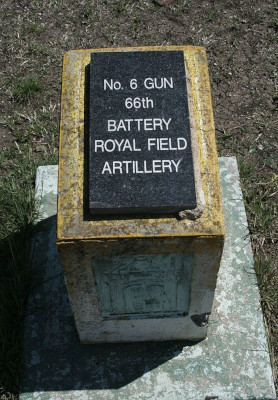The British Gun Position in Colenso: A Tragic Misstep in the Second Anglo-Boer War
In the vast open veld of Colenso, markers now punctuate the landscape, standing as silent witnesses to a battle fought over a century ago. These markers point out the exact locations where the British guns once stood during the fierce battle of Colenso, which played out during the Second Anglo-Boer War.
In the late 1800s, the geopolitical climate of Southern Africa was filled with tensions. The British, in their quest for imperial expansion, found themselves clashing with the Boers, Dutch-speaking settlers with a strong sense of independence. The war reached a dramatic peak in the battle of Colenso, a small town in Natal.
General Sir Redvers Buller led the British forces, aiming to break through the tight Boer lines and relieve the beleaguered 12,000 British troops under siege in the town of Ladysmith. As part of his strategy, Buller dispatched 12 guns to the right flank to provide support. Unfortunately, due to a lack of clear instruction regarding their positioning, these guns found themselves placed perilously close to the frontlines. The result was catastrophic. These guns, lacking adequate cover and positioned far too forward, quickly became the prime target for the sharp-eyed Boer marksmen. It wasn't long before they ran out of ammunition, rendering them ineffective and, shortly after, abandoned by their crew.
The sight of the abandoned guns, vital artillery pieces, was unbearable for the British. Recognizing their importance, a brave group of volunteers dared to retrieve them, fully aware of the dangers that lay ahead. Facing a hail of bullets and shells, they made a valiant effort, managing to secure two guns before succumbing to wounds or death. Their bravery in the face of near-certain death was emblematic of the spirit of the British soldier.
Two officers, in particular, were recognized for their gallantry. They were awarded the Victoria Cross, the highest military honor in Britain. One of them was Freddie Roberts, whose name carries a deeper historical resonance. He was the son of Lord Roberts, a prominent figure in the British Army who would soon replace Buller in the subsequent months of the war. Tragically, Freddie's heroism was short-lived, as he succumbed to his injuries just two days post-battle.
The Boers, seizing this opportunity, captured the abandoned guns. They were transported to Pretoria, and from there, distributed among the Boer troops. Ironically, these guns, once the pride of the British artillery, were turned against them in the battles to follow.
In today's peaceful setting, the markers at Colenso remind visitors of the bravery, strategic miscalculations, and the human cost of war. They stand as testaments to a bygone era, urging us to remember and learn from the past.

